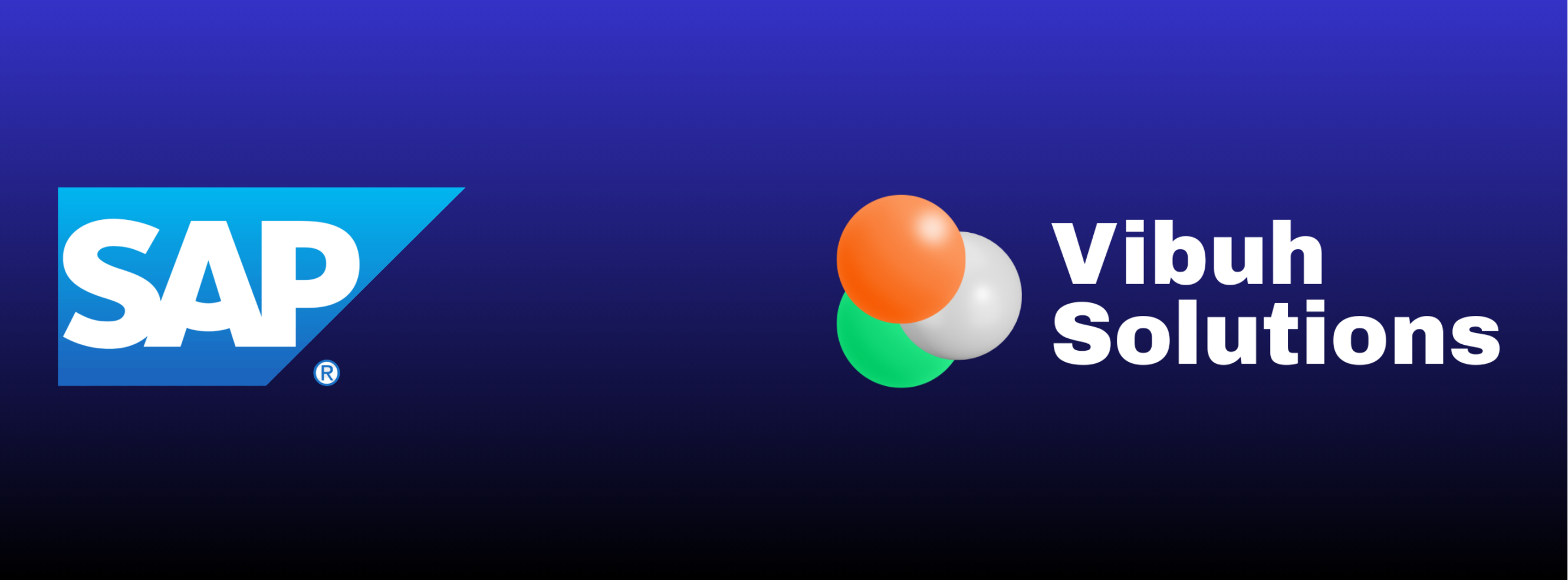Driving Innovation with SAP Product Lifecycle Management (PLM): A Whitepaper by Vibuh Solutions
In today's competitive digital economy, businesses must launch innovative products faster, scale manufacturing efficiently, and adapt to rapidly evolving market demands. Success requires not only strong product ideas but also robust processes to manage the entire product lifecycle — from ideation to design, production, service, and disposal.
Product Lifecycle Management (PLM) is the discipline that enables organizations to achieve this. With SAP PLM, companies gain a powerful IT solution to streamline processes, accelerate innovation, and ensure compliance.
At Vibuh Solutions, we specialize in implementing SAP PLM and related solutions to help enterprises transform product development into a strategic advantage. This whitepaper explores the role of SAP PLM, its key solutions, and how Vibuh Solutions empowers businesses to drive innovation, sustainability, and resilience.
The Strategic Importance of Product Lifecycle Management
Product Lifecycle Management has evolved from a process support tool into a strategic enabler of competitiveness. In an environment defined by shorter product cycles, regulatory pressures, and digital disruption, PLM delivers:
- Innovation Acceleration – Enabling faster evaluation, selection, and execution of new product ideas.
- Operational Efficiency – Reducing errors, duplication, and inefficiencies across the lifecycle.
- Market Responsiveness – Ensuring flexible adaptation to changing consumer and industry needs.
- Sustainability and Compliance – Supporting eco-conscious design, regulatory adherence, and responsible disposal.
Organizations that invest in PLM achieve shorter time-to-market, higher R&D yield, improved margins, and long-term resilience.
The Five Phases of the Product Lifecycle with SAP PLM
SAP PLM provides structured support for every stage of a product’s journey:
- Idea
The innovation journey begins with requirements management, portfolio evaluation, and early-stage concept development. SAP PLM ensures structured ideation processes so that only the most viable concepts move forward.
- Design
At the design stage, detailed engineering, CAD integration, and recipe or formulation management come into play. SAP PLM centralizes design data, providing version control, simulation, and collaboration across R&D, engineering, and quality teams.
- Manufacturing
SAP PLM bridges the gap between design and production by generating Bills of Materials (BOMs), routing plans, and shop-floor instructions. Integration with ERP and MES ensures synchronized, accurate data across systems.
- Service
Once products reach the market, SAP PLM manages service documentation, tracks maintenance, and integrates real-time feedback loops to continuously improve product generations.
- Disposal
At end-of-life, SAP PLM supports environmentally responsible decommissioning and recycling, ensuring compliance with sustainability goals and regulations.
Core SAP PLM Solutions Implemented by Vibuh Solutions
Vibuh Solutions delivers a comprehensive portfolio of SAP PLM solutions tailored to industry-specific needs:
- SAP PLM Recipe Development (RD)
SAP PLM Recipe Development addresses several challenges by providing an integrated platform where recipes are created, managed, and seamlessly handed over to manufacturing. At the heart of this capability lies the ability to manage different recipe types and to synchronize the plant recipe with the Material BOM (Bill of Material).
- SAP Specification Management (EHS)
Specification Management in SAP PLM Recipe Development is a structured, centralized object used to capture, store, and manage all critical data related to raw materials, intermediates, and finished products. Instead of scattered spreadsheets, paper-based documentation, or siloed databases, companies gain a single source of truth.
- SAP Document Management System (DMS)
Without a centralized system, documents are scattered, hard to update, and prone to compliance risks. SAP PLM RD + DMS ensures every document is stored, version-controlled, approved, and linked directly to the specification and recipe object.
- SAP Windows Word Integrator (WWI)
WWI (Windows Wordprocessor Integration) is SAP’s reporting tool that allows businesses to generate dynamic, template-driven documents directly from PLM data. It integrates seamlessly with Recipe Development, enabling data-driven report generation without manual formatting.
- SAP Handover-to-Manufacturing (MBOM Synch)
Ingredients and quantities from the plant recipe are converted into the Material BOM, eliminating manual re-entry. Ensures the recipe data in R&D and the BOM in production are aligned, reducing discrepancies and production errors.
SAP PLM for the Process Industry
Industries such as chemicals, pharmaceuticals, and consumer goods face unique challenges related to compliance, safety, and regulatory oversight. With integrated SAP PLM solutions, these industries can:
- Accelerate compliant product development.
- Manage extensive documentation across suppliers and regulatory bodies.
- Ensure seamless integration from research to production.
- Adapt quickly to evolving legal and market requirements.
With Vibuh Solutions’ Best Practices and Rapid Deployment Solutions, organizations can realize PLM value faster while ensuring scalability and compliance.
PLM as a Catalyst for Innovation and Sustainability
SAP PLM is more than a process enabler; it is a driver of innovation and sustainability.
Emerging Trends Defining the Future of PLM
Organizations must prepare for the future by embracing critical PLM trends:
- Data Governance– Strong data quality, security, and compliance frameworks.
- Digital Thread and Digital Twin – End-to-end connectivity across lifecycle phases for insight-driven decision-making.
- Designing for Sustainability– Regulatory-driven eco-conscious product strategies.
- AI-Human Integration – Combining automation with skilled human expertise to achieve innovation at scale.
These trends underscore the importance of PLM as a strategic foundation for resilience and competitiveness.
The Vibuh Solutions Advantage
At Vibuh Solutions, we go beyond implementation. We deliver measurable business outcomes:
- Faster product launches through rapid deployment frameworks.
- Reduced downtime with synchronized processes and single-source-of-truth data.
- Improved compliance and risk reduction across industries.
- Enhanced R&D productivity and stronger innovation pipelines.
Our team of SAP-certified consultants combines technical expertise with business understanding, ensuring every PLM project delivers return on investment and long-term competitive advantage.
Conclusion
Innovation is no longer optional — it is essential for survival in today’s turbulent global economy. SAP Product Lifecycle Management equips organizations to thrive by integrating people, processes, and technology into one cohesive system.
With Vibuh Solutions as your trusted partner, you gain more than a technology provider; you gain a strategic ally in innovation, compliance, and growth.
Contact Vibuh Solutions today to schedule an SAP PLM demo and discover how we can help you optimize product development, accelerate time-to-market, and ensure sustainable success.


